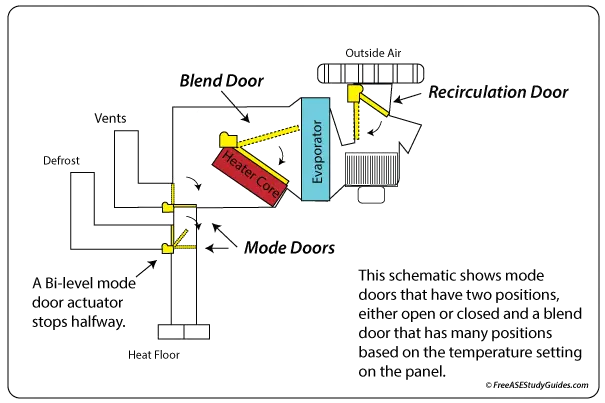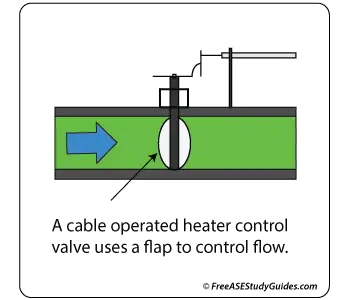Heater Control Valve

The heater core uses engine coolant to heat the passenger compartment. A heater control valve controls the coolant flowing through the core. It is not used in all heater systems, as some manufacturers allow coolant to flow through the heater core any time the engine is running. This type of system uses a blend door to mix cooled and heated air to achieve the desired temperature.
The heater control valve allows the flow of coolant through the heater core to be controlled and switched on and off without affecting the operation of the rest of the cooling system. It may be located on the inlet or the outlet port of the heater core and activated by a cable, electronic control, or a vacuum signal. This valve may be normally open, allowing coolant to flow until activated, or normally closed, allowing coolant to flow only when activated.

A cable-operated heater control valve uses a Bowden cable to drive a flap inside the valve. As the occupant manually moves a lever in the control panel, the cable moves a flap in the valve.
The vacuum valve does the same thing with a pintle and diaphragm, except this type of valve is normally open. This is in case of malfunction; heat may still be provided to the occupants by the heating system. The engine supplies vacuum through a switch in the dash.
Electronic controls can be (PWM) pulse width modulated or controlled by a simple on/off solenoid. Pulse width modulation offers more control than manual controls. The control valve may also be either opened or closed by a signal from the BCM.